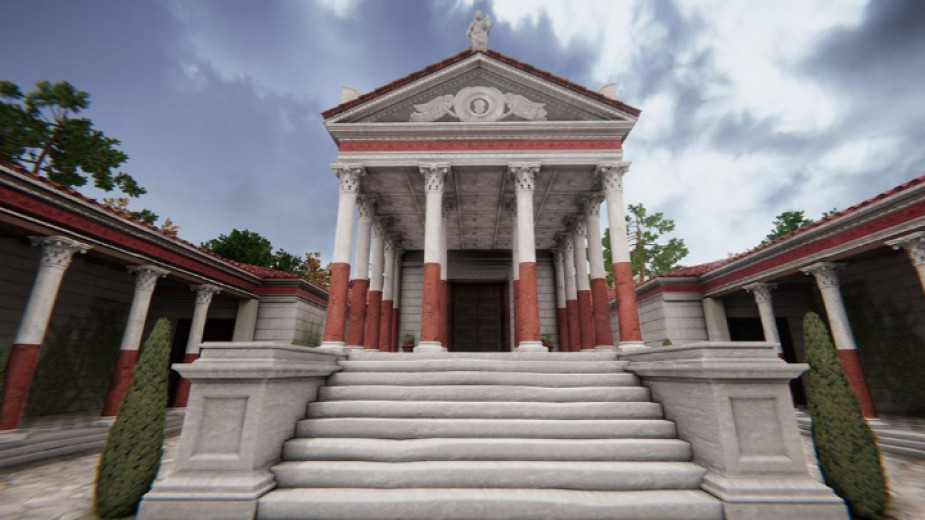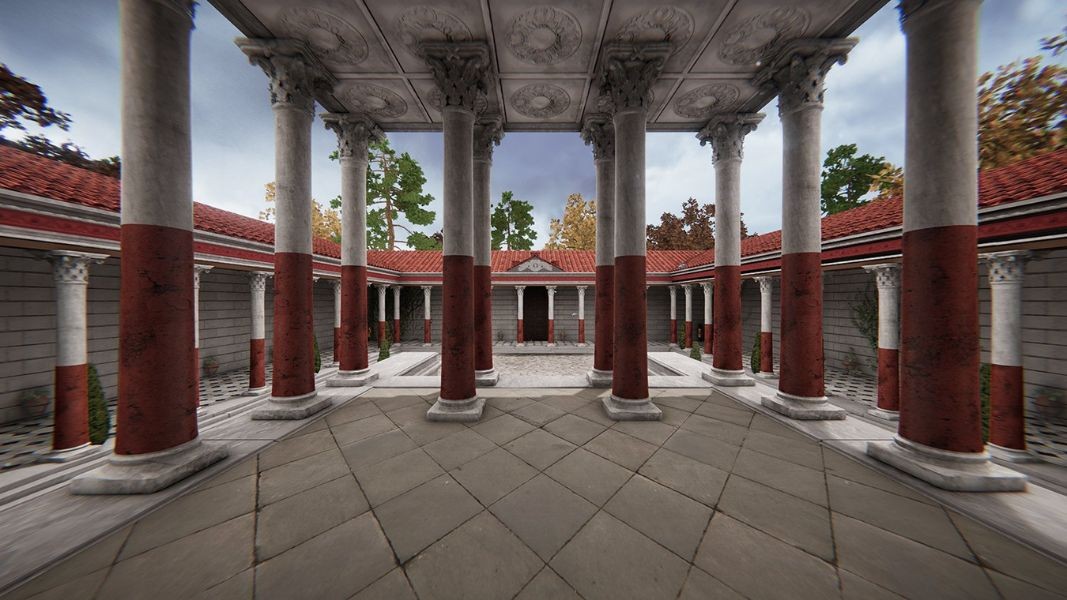 4
4
Visitors to the National History Museum in Sofia can now take a virtual walk in the temple of the ancient Roman goddess of happiness and fortune Fortuna. The building is part of the former Roman colony of Ulpia Oescus near the present-day Bulgarian village of Gigen, near the Danube River. The virtual restoration reveals in the smallest details all the splendor and beauty of the former temple and is now part of the permanent exhibition of Bulgaria’s National History Museum.
The Temple of Fortune (templum Fortunae) was located in the Forum complex of Ulpia Оеscus. It has been fully discovered and studied by archaeologists. The building was constructed in the Corinthian style. According to a Latin inscription, the temple was dedicated to the Roman emperor Commodus (180-192) and was built with the funds of the then "association of craftsmen" (collegium fabrorum) in 190.

The colonnade of the courtyard was decorated with a frieze - architraves with embossed bull heads and laurel garlands. The temple consisted of an entrance hall and a cult room. Its southern façade had four Corinthian columns. On the triangular pediment there were two Victorias depicted, holding a laurel wreath. Inside, in the wreath, was a relief image - probably the head of Medusa, to protect against evil. The temple complex was destroyed by the Goths or by an earthquake in 376-378.

You can find more interesting details related to the tumultuous story of the ancient Roman city of Ulpia Oescus here:
Compiled by Veneta Nikolova
Photos: National History Museum
English version Rositsa Petkova
An international scientific conference will be held in Sofia from 21 to 24 May, the days preceding the celebration of Saints Cyril and Methodius, announced the Bulgarian Academy of Sciences (BAS). The conference, titled "Christian Missions in the European..
A key to our heritage and national identity, the Glagolitic alphabet is an alphabet and a message to Europe, surrounded by many hypotheses. To mark the 1170th anniversary of its creation, we take a trip back to the 9th century, when the brothers Cyril..
A Bulgarian delegation, led by Minister of Justice Georgi Georgiev, attended the enthronement of Archimandrite Gavriil as abbot of the Zograf Monastery in Mount Athos. Hieromonk Gavriil elected new abbot of Zograf Monastery “This is a..
Though known mostly as one of the closest associates of Vasil Levski and a dedicated fighter for national liberation, there was actually much more to..

+359 2 9336 661
